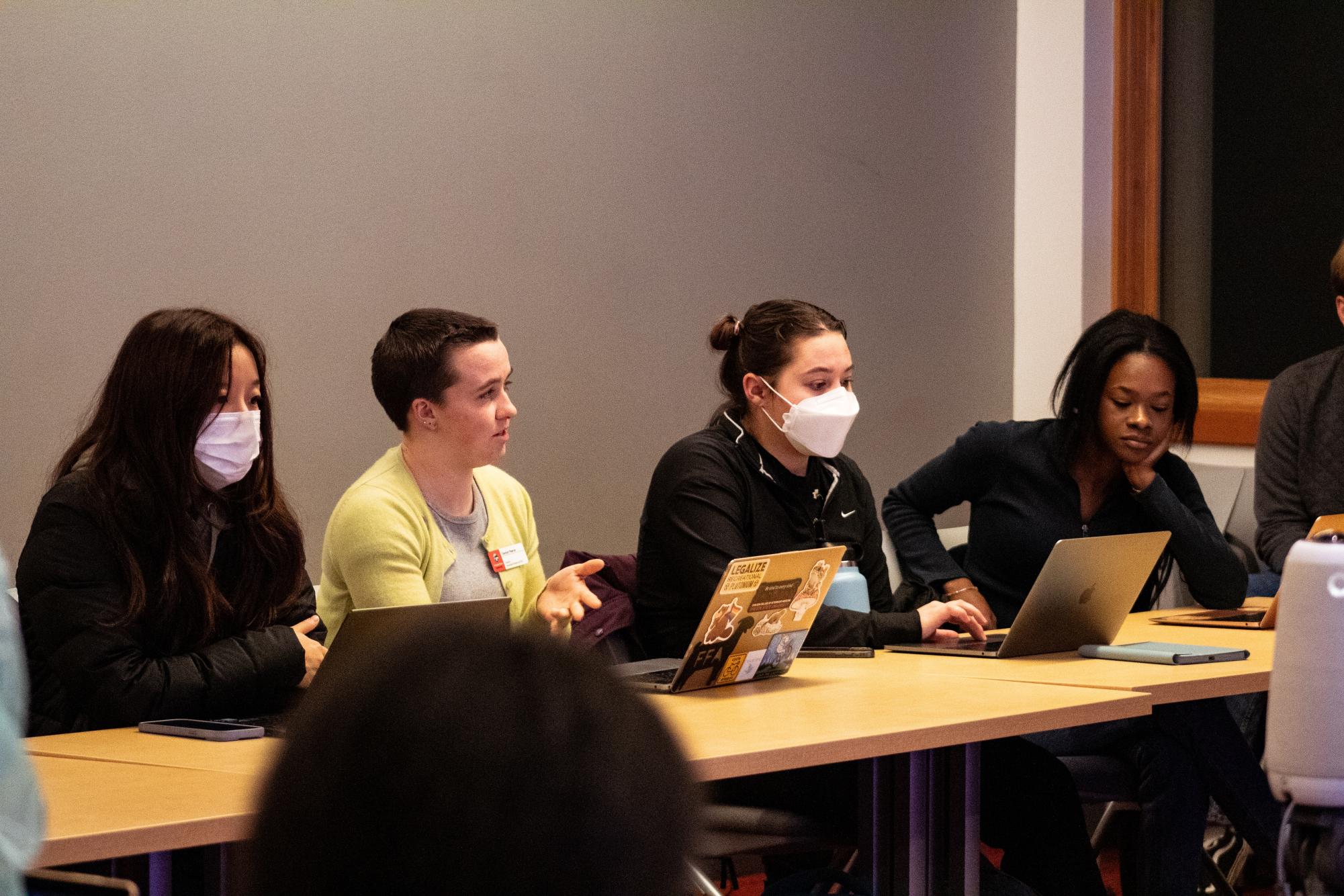The Resident Hall Association brought a bill to vote at Associated Students of Oregon State University’s Senate meeting on Jan. 10 to make life-saving emergency care more accessible at OSU.
The motion, a bill that will make the anti-opioid NARCAN provided in “easily accessible and reliable places” in all residence halls, dining halls and operational facilities,” passed unanimously.
While specifics are still underway, the bill’s sponsor, Senator Carolyn Pearce, said Monday that the process is “going smoothly” after the ASOSU Senate approved providing NARCAN in dorms in January.
“Both RHA and ASOSU have a vested interest in representing the needs and welfare of students who live in the dorms, visit the dining halls and are employed in other University Housing and Dining Services facilities,” RHA President Nathan Schmidt said at a RHA meeting on Jan. 8.
Written by Schmidt, RHAR 66.2/SR 83.03 (also known as the RHA-ASOSU NARCAN Act) looks to follow in the footsteps of OSU’s Center for Fraternity and Sorority Life and The Pride Center, both of which currently have NARCAN.
“It started a few weeks before the end of the fall term when I met with UHDS and Student Health Services to discuss the feasibility of the resolution,” Schmidt said. “UHDS and SHS were both in support of the idea of the resolution. I shared my draft a few times before I brought it to a vote at the RHA General Assembly and made sure they were okay with the resolution and felt it was something we could accomplish together.”
Schmidt went on to praise the communication and cooperation shared by the RHA, ASOSU and UHDS, which made the process of writing and passing the bill a smooth one.
“UHDS houses more than 4,700 people,” Schmidt said. “The dining halls serve thousands of students, staff and members of the public daily … with the increase in overdoses in the past several years, Student Health Services has recommended we make NARCAN accessible on campus.”
According to the National Institute on Drug Abuse, opioid-related overdoses increased from 21,089 in 2010 to 80,411 in 2021. The cause of these increased deaths is attributed largely to the increased prevalence of synthetic opioids such as fentanyl.
The bill states that, “The White House Office of National Drug Control Policy has designated fentanyl combined with xylazine as an emerging threat to the United States.”
The numbers are specifically egregious here in Oregon. According to the bill, Oregon ranks second in the nation for drug use related deaths, with opioid related deaths accounting for 73% of all overdose related deaths.
The website for the Substance Abuse and Mental Health Services Administration classifies Naloxone, NARCAN’s main ingredient, as an opioid antagonist, meaning that “it binds to opioid receptors and can reverse and block the effects of other opioids.”
According to the Center for Disease Control and Prevention, administering Naloxone to a person experiencing an opioid overdose can restore normal breathing as quickly as two to three minutes.
“In nearly 40% of overdose deaths, someone else was present. Having Naloxone available allows bystanders to help a fatal overdose and save lives,” the CDC website says.
In 2015, the U.S. Surgeon General Jerome Adams emphasized the importance of medicine such as naloxone when he said, “knowing how to use Naloxone and keeping it within reach can save a life.”
SAMHSA’s website says Naloxone can be administered in four ways: “intranasal spray (into the nose), intramuscular (into the muscle), subcutaneous (under the skin) or intravenous injection.”
NARCAN is a nasal preparation of Naloxone.
Aside from being relatively cheap, with the price averages between $20 and $40 for a dose according to Schmidt, NARCAN is very easy to use.
The official instructions on NARCAN’s website list only three steps: lay, spray and stay. Essentially, all one has to do is lay the person who may be experiencing an opioid overdose flat on the ground, insert the device into their nose and spray, call emergency services, continue to administer doses and stay with the person until they arrive.
“We hope it will be like Epipens,” ASOSU Senator Carolyn Pearce said at the RHA meeting. “Once the knowledge gets around, it will be easy to use. The instructions are right on the box.”
However, though NARCAN’s website says that Naloxone has been documented to reverse opioid-related overdoses between 83%-100% of the time, time is a key factor in saving lives.
“With opioid overdoses, surviving or dying wholly depends on breathing and oxygen … opioids fit into specific receptors that also affect the drive to breathe,” the National Harm Reduction Coalition’s website states.
It only takes three to five minutes of not breathing to cause brain damage, the site continues. Death soon follows.
Not only is it crucial to identify opioid overdoses quickly in order to administer care, it is equally crucial in keeping the person alive while the emergency services arrive.
According to a 2017 study published in the journal JAMA Surgery, the average EMS response time nationwide is 7.9 minutes, so the quicker an overdose is identified and NARCAN is administered, the better the chances for survival.
For those interested in learning more about NARCAN, instructions on how to use it, or are interested in identifying an opioid overdose, check out NARCAN’s website. SAMHSA offers services designed to connect those struggling with substance dependance with those best suited to help. Call 1-800-662-4357 or visit findtreatment.gov for more info.
For immediate emergencies, call 911.














































































































